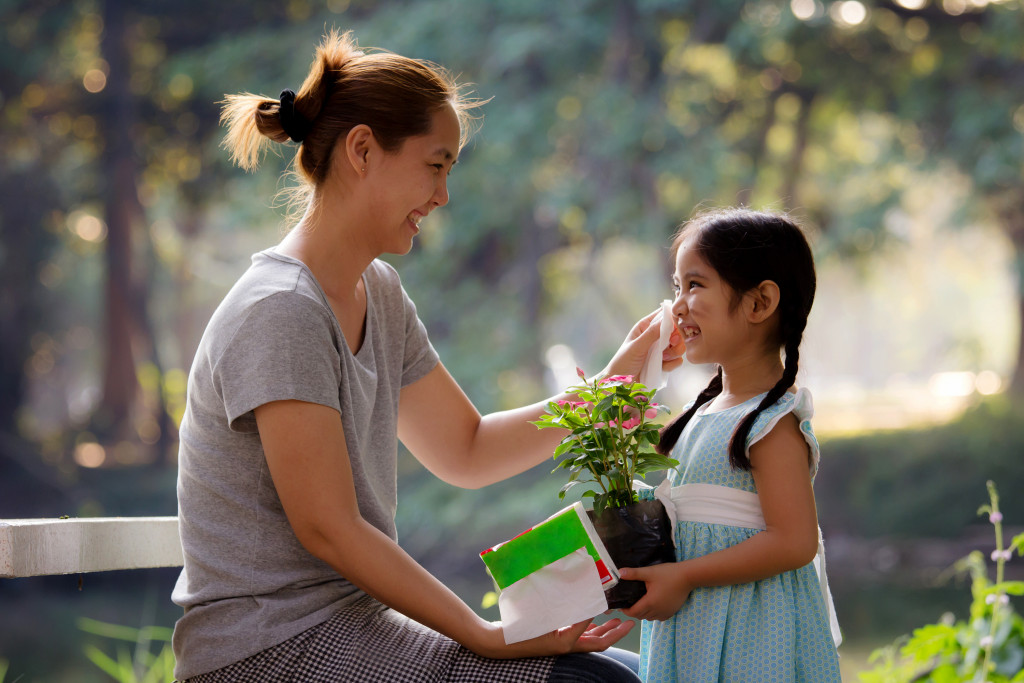Have you ever wondered why your child seems to show love differently than you do? Or why your partner expresses love in a way that doesn’t make sense to you? It could be because you have different love languages.
People often have different love languages than their parents or children. This can be due to different experiences, having differing environments, their parents’ styles of parenting, cultural differences, personal preferences, or simply because people are wired differently. However, it is important to understand and respect each other’s love languages in order to maintain a healthy relationship.
What Are the Five Love Languages?
The five love languages are physical touch, words of affirmation, quality time, acts of service, and gifts. Each person has a primary love language that they respond to the most.
Physical Touch
The physical touch love language is all about feeling loved through touch. People who have this love language need regular physical affection to feel loved and appreciated. Hugs, kisses, back rubs, and hand-holding are all expressions of love for people with the physical touch love language.
For example, if a person’s primary love language is physical touch. This means that they feel loved when their loved ones touch them, such as by holding hands, hugging, or cuddling. This is one of the primary love languages of infants and small children, but this may soon change depending on you and your partner’s interactions with your child. It is important to maintain this as it plays a role in children’s moral development.
Words of Affirmation
Other people may feel loved when they receive compliments or words of encouragement. This is known as the love language of words of affirmation. People who have this as their primary love language often feel appreciated when their partner tells them they did a good job or notices something positive about them.
For children and mothers, words of affirmation are exchanged through praise and storytelling. Simply asking their child about their day and listening may make them feel loved, and you can share stories with them to show them that they are part of your life. Praising them for their achievements also helps develop their self-confidence and teaches them the importance of self-ability.
Quality Time
Still, others may feel loved when they spend quality time with their loved ones. This could be going on a date night, taking a walk together, or simply sitting and talking with each other without distractions. The love language of quality time is all about undivided attention and focus.
Acts of Service
Some people feel loved when their partner does things for them, such as making dinner, doing the laundry, or filling up their gas tank. This is called the love language of acts of service. Those whose primary love language is acts of service often appreciate it when their loved ones go out of their way to help them out with everyday tasks. Children may not notice, but this is one of the primary love languages of most mothers. This is especially true for busy mothers who also have to work.
Gift-giving
Finally, there are those who feel loved when they receive gifts from their loved ones. These gifts can be big or small, but they must be thoughtful and given with genuine care and affection. For mothers, this may also mean giving their children the best they can afford in everything, whether it be getting the coolest toys to gadgets or enrolling them in the most expensive institutions with after school care and world-class facilities. Many mothers are willing to spend top dollar on their children’s education, too, since it affects them even in their adulthood.
The gift-giving love language is one of the most popular and well-known love languages.

How Can You Show Love to Your Child?
Now that you know the five different love languages, you may realize that you have been doing some of them already. However, if you wish to teach them more about love languages, the best way to do so is by modeling it to them. Here are some ideas for modeling each love language:
- Physical Touch: Give your child lots of hugs and kisses throughout the day. Hold hands while walking together or cuddle while watching TV together. Sit next to your child during meals so you can reach out and touch them while talking. Roughhouse together during playtime!
- Words of Affirmation: Compliment your child often on things they do well. Encourage them when they are feeling down and listen attentively when they want to talk about something important to them. Make sure your body language communicates that you are interested in what they are saying by facing them and maintaining eye contact.
- Quality Time: Turn off all electronics and give your child your undivided attention for 30 minutes each day. Talk about your day, play a game together, help with homework, read a book—just do something together without distractions! Plan regular family outings and vacations so you can create lasting memories together.
- Acts of Service: Do something special for your child every day without being asked—make their favorite breakfast in bed, or pack their lunch for school with a loving note inside.
- Gifts: Give your child heartfelt presents on holidays and special occasions like birthdays—but don’t forget “just because” gifts too! These don’t have to be expensive—a homemade card or art project will do just fine! Get creative and put thought into what would make your child smile—a new toy they’ve been wanting, or tickets to see their favorite sports team play live. Let them know how much you care by giving them something special just because you were thinking about them!
Final Thoughts
No matter what your child’s primary love language is, there are plenty of ways to show them some extra love! By understanding the five different love languages, you can tailor your actions toward showing affection in a way that will resonate most strongly with your little one. So get out there and start showing your child some extra TLC today!



